Croakers: Family Sciaenidae
Species: Cynoscion parvipinnis (Ayres, 1861); from the Greek words kyon (dog) and skion (from sciaena, an old name for a European croaker) and the Latin words parvi (small) and pinnis (fins).
Alternate Names: Bigtooth corvina, shortfin seabass, sea trout, weakfish, caravina and my personal favorite—vampire corvina. Called corvina aleta corta or corvina azul in Mexico.
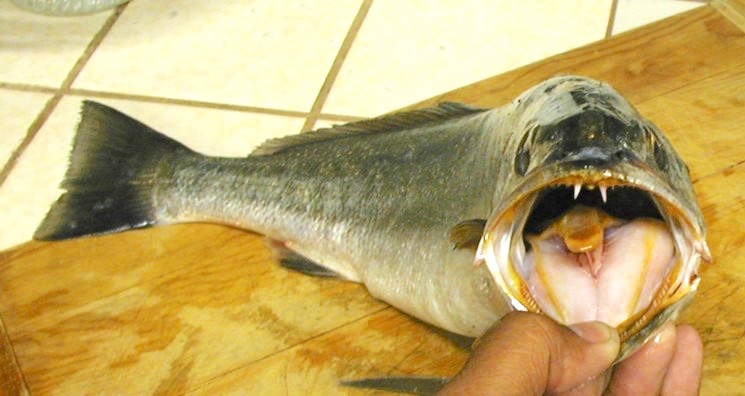
Shortfin Corvina caught at Coronado Mini Pier by Pescador
Identification: Elongated body with a large mouth and a lower jaw that extends beyond the upper jaw; 1 or 2 LARGE, fang-like canine teeth on each side of the upper jaw; no barbels on the chin. Their coloring is bright blue-gray above, silvery below; inside of mouth yellow-orange; fins pale to yellowish. Caudal fin slightly indented. Sometimes mistaken for small white seabass but the fang-like canine teeth that are very noticeable in the corvina are lacking in the white seabass.
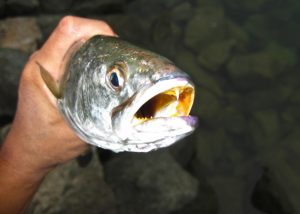
Size: To 32 inches in length; those caught from piers are usually 14-18 inches. For many years the record fish, as listed by the International Game Fish Association, was 6 pounds, 15 ounces. However, several fish exceeding 7-pounds had been reported from San Diego Bay. Then, on June 20, 2008, Carmen C. Rose caught a 10 lbs. 6 oz. corvina fishing a dead grunion (without a sinker) from a boat just 40 feet off the beach in the South Bay near the US Navy housing on the Silver Strand. It now holds the IGFA record.
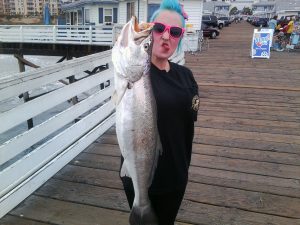
Shortfin corvina from the Crystal Pier in San Diego – Picture courtesy of Crystal Pier Bait & Tackle
Range: Mazatlán, Mexico and the Gulf of California, and the Pacific coast north to Huntington Beach, California. Common from Bahia San Quintin, northern Baja California, south although a population seems centered around San Diego Bay.
Habitat: Shallow, inshore sandy or soft mud bottom areas including bays.
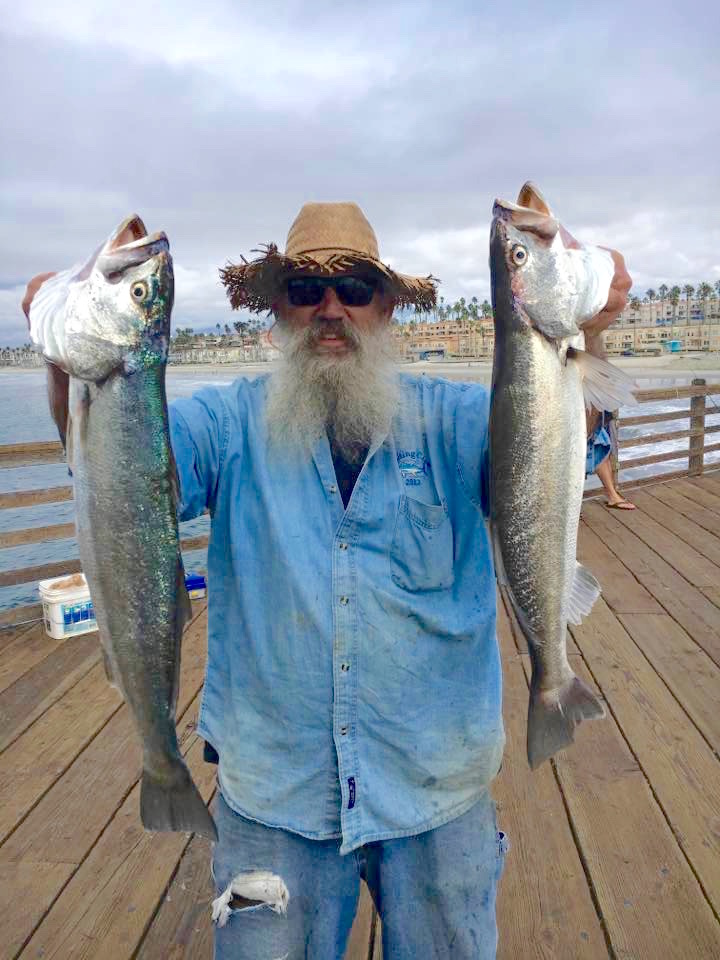
Shortfin corvina caught by Mark at the Oceanside Pier — (Picture courtesy of Oceanside Pier Bait & Tackle)
Piers: Until recently only reported from piers in San Diego Bay. The last few years have seen increasing numbers showing up at the Imperial Beach Pier, Ocean Beach Pier, and Crystal Pier (especially during grunion runs). A few have also been reported from the Oceanside Pier. Best bets: Coronado Ferry Landing Pier, Embarcadero Marina Pier, Shelter Island Pier, Imperial Beach Pier and Crystal Pier.
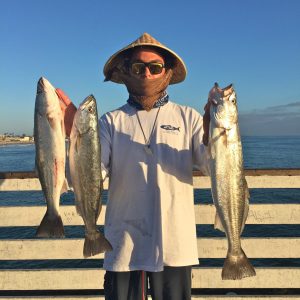
Angel Hernandez and a trio of corvina from the Crystal Pier in San Diego — Picture courtesy of Crystal Pier Bait & Tackle
Shoreline: Regularly taken by shoreline anglers in San Diego Bay.
Boats: Boaters in south San Diego Bay take quite a few.
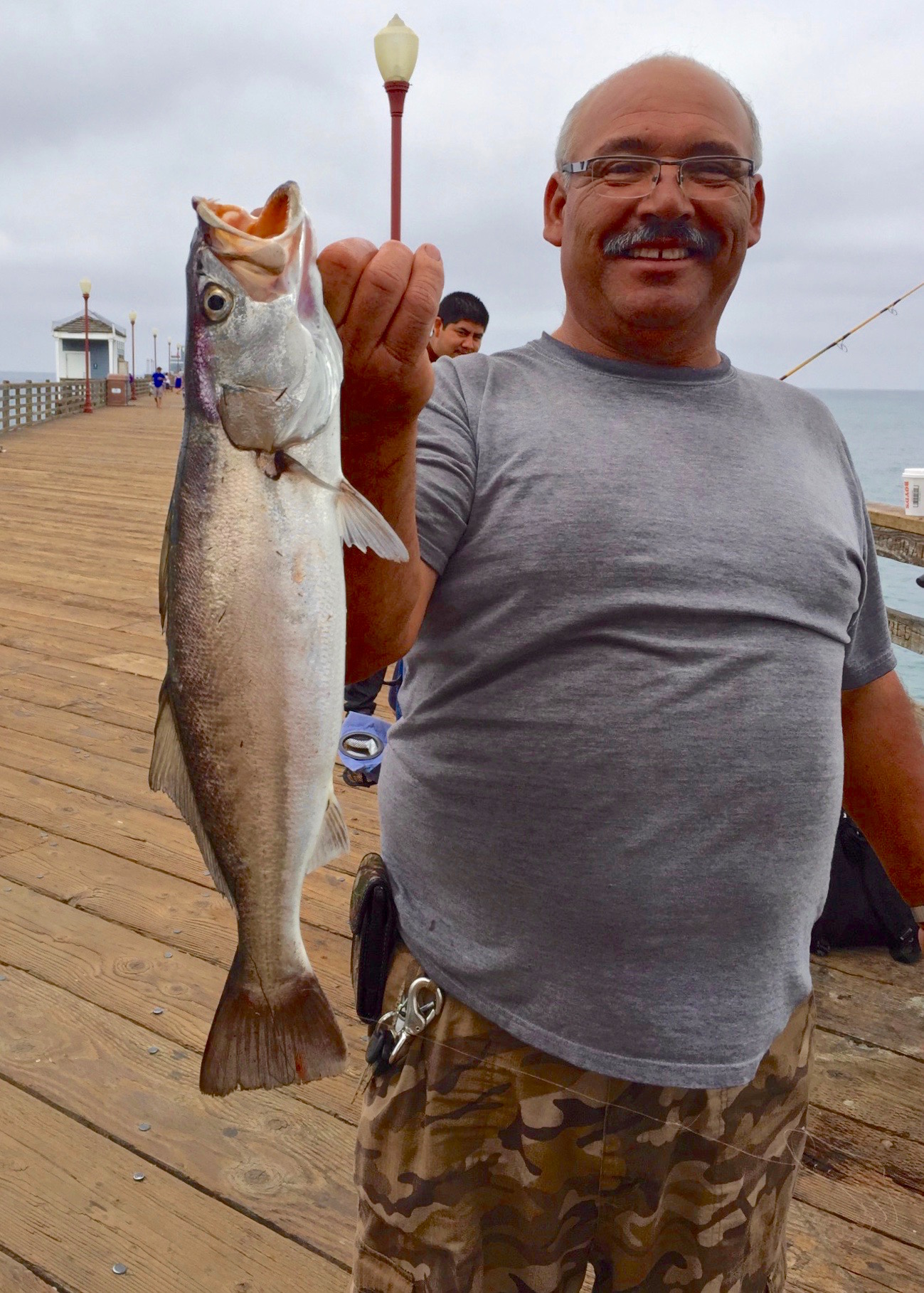
Shortfin Corvina caught at the Oceanside Pier by Lewis — Picture courtesy of Oceanside Pier Bait & Tackle
Bait and Tackle: Light to medium size tackle will work with small, size 4-2 hooks typically used if bait fishing. Best baits are live bait—anchovy, smelt, small queenfish or sardine but ghost shrimp (especially when fished under a bobber) can also be excellent. Although in Baja they are primarily considered a bottom feeder, most reports from SD Bay have them feeding mid-level to the top. They are also considered to be an excellent fish for artificials with many different lures providing action including crank baits, spoons, spinner baits, swim baits and plastic grubs.
Food Value: Excellent, mild-flavored and firm textured meat that is similar to white seabass and can be prepared in many ways.
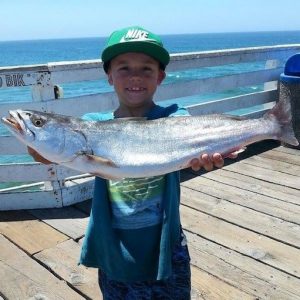
Shortfin corvina from the Crystal Pier in San Diego – Picture courtesy of Crystal Pier Bait & Tackle
Comments: These fish, although reported to be common as far north as San Pedro during California’s warm water years of the late-1800s, were considered absent in the state by the 1930s. That changed when fish began to be increasingly seen in the southern parts of San Diego Bay in the 1990s. Whether lured north by warm El Niño waters (’87-’88, ’91-‘92, ’97-’98), or brought in mistakenly by returning long-range Sportfishing boats, the result has been the introduction of a new fish and fishery to San Diego anglers. Although more commonly taken by anglers fishing from boats in south San Diego Bay, increasing numbers have been reported from both bay and oceanfront piers in San Diego County. Nevertheless, any pier catch should be considered fortuitous. Although considered primarily a diurnal feeder (daytime feeder), many of the reports on the PFIC Message Board have concerned nighttime catches. Shrimp is considered their favorite food although an increasing number are reported hitting on live bait—everything from queenfish to small jack mackerel. Most commonly caught April through September.
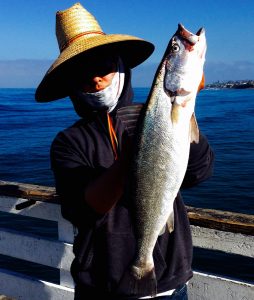
Angel Hernandez at the Crystal Pier in San Diego – Picture courtesy of Crystal Pier Bait & Tackle
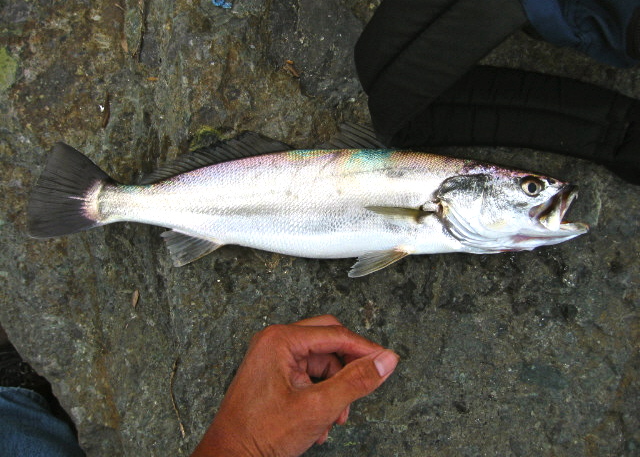
Caught them sight fishing big pieces of mussels of Redondo and Hermosa piers in early 70s, on semi light saltwater tackle 10 lb test line what a fight, would jump down from pier to land them from shore, oh to be young and agile again
The Shortfin Corvina is an interesting species. It is interesting because of the habitat it is in and its own traits. This post also provides a clear and precise interpretation of its behavior and ecological role. Reading posts like this is just as engaging as reading great research, much like in cheap essay writing services that value clarity over anything else.
Have you noticed an increase in shortfin corvina numbers at harbors outside San Diego, could it be related to climate change or is it due to rapidly changing local environmental factors?
When holding in their hands the fish they caught after a long day at sea, they all feel very happy.